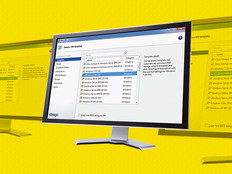Open Communications

For those who are deaf or hard of hearing, communicating on the phone with family, friends and businesses can be an enormous challenge. But thanks to companies such as Viable, it can be as easy as connecting to the Internet.
Viable provides telecommunications services and products for the deaf, including video relay service (VRS), which allows deaf people to use American Sign Language (or another manual communications mode) to communicate over an Internet connection with an interpreter, who in turn translates the conversation orally to the hearing person using any telephone.
Planning, setting up and installing data and call centers — the VRS infrastructure — has been a major challenge to the quickly growing company. But by matching its IT strategy with the business strategy of supporting ever-increasing numbers of deaf users, Viable has been able to find ways to grow without the usual hiccups that sometimes accompany rapid expansions.
The centerpiece of its IT strategy has been standardization on equipment, vendors and suppliers. “We were able to cut the time of opening and supporting data centers without any degradation of service — that was essential to us,” says Jason T. Yeh, co-founder and vice president of technology. It used to take a two-person team about a week; now one person can complete the job in about three days.
Ed Bosson, a VRS analyst who is credited with envisioning deaf people communicating via videophones more than 10 years before the FCC mandated it, says VRS companies compete based on their IT infrastructures. “There are about eight VRS service companies and a number of subcontracting companies,” he says. “This has become a cutthroat industry.”
Although quality depends somewhat on the user’s Internet connection, Viable recognizes its responsibility to hold up its side of the infrastructure. “Having a reliable Internet connection is one of our primary priorities,” says Jeremy Shaffner, director of IT. This means adding capacity whenever usage growth threatens to degrade performance.
One of Viable’s most challenging tasks is building new data centers and call centers; it currently has more than a dozen call centers and is adding about one per month. “Each time we add a call center, we may have to increase bandwidth by beefing up an existing data center or adding a new data center,” says Shaffner.
He acknowledges that building, testing, troubleshooting and servicing geographically dispersed centers is a challenge.
Viable tries to outfit all data centers with the same equipment from the same vendor. This reduces the learning curve needed to set up and test equipment, and it eases troubleshooting. Using products from only a few vendors also limits the points of contact the company needs when calling for support.
Viable’s success stems from the tight integration between business and technology sections of the company. “With our business model, technology has a greater role than that of support,” says Shaffner. “I’m primarily a technology person, but I have a seat at business strategy meetings.”






